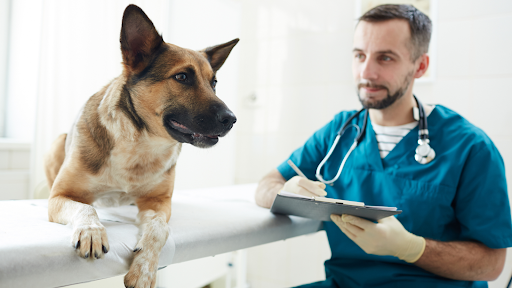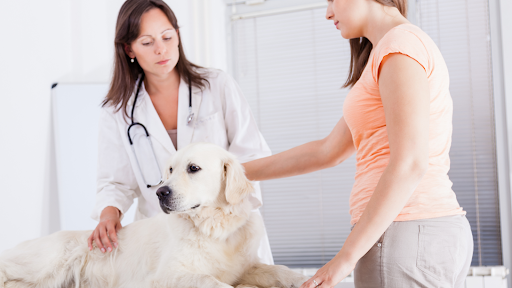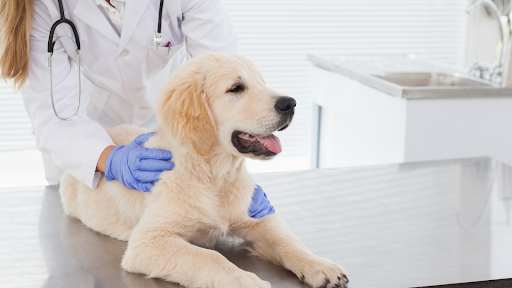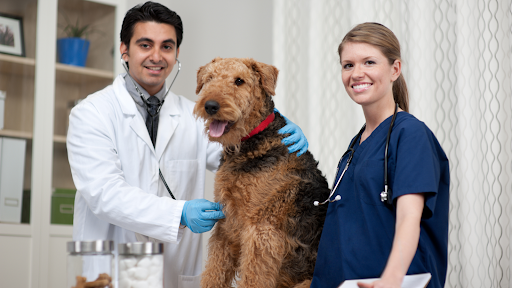When you’re looking after pets, either your own or in one of our house-sitting homes, then you need to be aware of what to do in any emergencies. Identifying an emergency should be the first thing you understand when it comes to looking after pets. It’s not easy knowing what is normal behaviour and what is unusual behaviour when pet minding. However, the owners should have provided you with a good guide for their pets’ normal behaviour. This guide should also cover who to call for a pet emergency.
Determining what is a pet emergency can be challenging at times. However, if your pet has a routine, you check to see if they are doing anything out of the ordinary. A pet emergency is anything that appears not normal. However, it can be easily explained. For example, if you take your dog for a long walk and they lie down to relax and fall asleep when you get back. While this may not be normal for their routine, there is an easy explanation; they’re tired from the walk.
This article will discuss some signs that should be considered an emergency and the best method for providing care for your pet. We’ll also discuss some common pet emergencies and how to respond. Some emergencies will need urgent care, and others need to be addressed but may not be that urgent. Naturally, all the decisions regarding your pet are up to your ideas, and this article should only be used as a guide.

Common Pet Emergencies & How to Respond
When you’re looking after pets, either your own or in one of our house-sitting homes, then you need to be aware of what to do in any emergencies. Identifying an emergency should be the first thing you understand when it comes to looking after pets. It’s not easy knowing what is normal behaviour and what is unusual behaviour when pet minding. However, the owners should have provided you with a good guide for their pets’ normal behaviour. This guide should also cover who to call for a pet emergency.
Determining what is a pet emergency can be challenging at times. However, if your pet has a routine, you check to see if they are doing anything out of the ordinary. A pet emergency is anything that appears not normal. However, it doesn’t mean something that can be easily explained. For example, if you take your dog for a long walk and they lie down to relax and fall asleep when you get back. While this may not be normal for their routine, there is an easy explanation; they’re tired from the walk.
This article will discuss some signs that should be considered an emergency and the best method for providing care for your pet. We’ll also discuss some common pet emergencies and how to respond. Some emergencies will need urgent care, and others need to be addressed but may not be that urgent. Naturally, all the decisions regarding your pet are up to your ideas, and this article should only be used as a guide.

Signs your pet needs to see a vet
Any life-threatening situation is considered an emergency, but there are others that, while not immediately life-threatening, your pet will still need to be seen by a vet. As our pets cannot communicate directly, you need to be aware of what is a pet emergency, and who to call for a pet emergency.
If you notice any of the following, you should contact your vet or the nearest pet emergency hospital immediately for a consultation.
If you notice any of the following, you should contact your vet or the nearest pet emergency hospital
immediately for a consultation.
● Visible Wounds – if you see any bleeding or discharge coming from a wound, look closely and
see if it is deeper than a scratch. Anything that your dog or cat may be wary about touching
will need medical attention. You may find that dogs tend to lick wounds that bother them,
and cats tend to hide if they’re injured. If your pet is bleeding for longer than five minutes or
is near any sensitive areas (eyes, nose, ears, rectum, etc.), they’ll need medical assistance.
● Physical Trauma – if your pet has been hit by a vehicle or attacked by another animal, they’ll
need assistance ASAP. Do not hesitate to seek medical advice in these situations. Dogs and
cats are reasonably resilient, but broken bones and internal bleeding can be challenging for
an untrained person to identify.
● Breathing Issues – occasionally, you may see your pet having problems breathing. They may
be huffing or coughing excessively. Dogs and cats can occasionally get objects stuck in their
throats – especially if you have a dog that enjoys chasing balls and sticks.
● Vomiting & Diarrhoea – throwing up once, or having one runny poop, is not an emergency,
but if it continues for longer than a day, you’ll need to seek medical advice.
● Obvious signs of pain – if you notice any signs that your pet is having trouble walking or
standing, you’ll need to check them over. You can look for any signs of damage to their paws
and legs. Our pets will often allow us to touch a wound, provided you are gentle. If the
limping does not abide within a day, it is best to seek veterinary help.
● Trouble toileting – if your dog has apparent signs of distress when they’re trying to poop or
urintate, they may need to go to the vet if it the trouble lasts longer than a day. Cats are a
little harder to watch, but you’ll notice if they go into their litter box more often than usual.
● Not eating normally – provided you are keeping to a routine and not overdoing the treats,
your dog and cat should eat at their regular time. If they are not eating or seem
disinterested and this keeps up for more than a day, you’ll need to seek help.
All these listed are situations where you should visit a vet. In most cases, the problem can be sorted
out in one visit, but there are times that a continued stay is required. Having suitable pet emergency
insurance whenever you need to leave your pet with another person can be ideal, as it means they
won’t need to guess if something needs medical attention or not.
Always keep a watch on your pets and look for any behaviours that are out of the ordinary. All pets
should have an annual check-up to make sure everything is working as it should. These check-ups
can be more frequent for older cats and dogs, and you should consult with your vet about what is
best.

Who to Call for a Pet Emergency?
All pet owners should have a list of contacts related to their pet’s health, and you can consult this if you’re in an emergency. You can also search for nearby vet locations and emergency vet care or hospitals in your area. In an emergency, it may not matter if you take your pet to your regular vet. When you call the vet, you can let them know what is happening, and they may advise you on the best recourse for your particular situation.
In some cases, you may call a vet, and provided you give them practical information, they can determine if it is best to bring your pet to them immediately or if it is best to wait. If your vet suggests you wait, you can follow their advice or contact another clinic. All vets will have the care of your pet in mind, and depending on the issue, it may be best to wait until the next day.
In most major cities, you’ll find after-hours veterinary care or vet hospitals operating to help support the community. You can call these at any time, and they’ll provide you with the best animal care possible. Whenever you call through to an emergency centre, try to remain calm and answer any of their questions. If you’re having trouble, then it may be best to get another person to make the call for you.
What to do when you call an emergency vet?
Pet emergencies can be extremely stressful, mainly because our pets cannot communicate how they feel in the same way people can. All vets are trained to identify when animals are injured and how they may respond to touch. If you cannot call an emergency vet, it is acceptable to take them immediately to the hospital, where they will be seen as soon as possible. Vet hospitals work in the same way the regular hospitals do. They’ll assess each animal as they arrive, and the ones with the most life-threatening injuries will be seen first.
When you call through to a vet clinic, try your best to remain calm and not panic. Have a few deep breaths and answer any questions asked in a relaxed manner. Our pets can feed off our emotions, and they’ll start to panic if they sense something is a problem. When you remain calm and act as if nothing is wrong, you encourage them to do the same.
If your pet has been injured in a car accident, it is best to keep them as calm as possible. Dogs and cats may feel uncomfortable and want to move around; providing them support and a place to rest can be best for them. Try to get some help getting them into your vehicle and drive them directly to the nearest pet emergency centre.
When you’re transporting small dogs and cats, using an appropriate cat or dog carrier is best. For large dogs, you may want to make room on the back seat. If possible, you can lay the back seats down and create a comfortable area for them to lie down. Place several blankets in your car to give your pets the most comfortable ride possible. Don’t try to force your pet into a particular position, but rather allow them to choose the best way to sit in the vehicle. Drive with care, and go at a suitable pace.
When looking after pets for other people, be sure to contact them as soon as possible and let them know what has happened and the details of the care being provided. The vet you take the pets to may want to call the owners and discuss the options.
Common Pet Emergencies and How to Respond
When most people think about an emergency for a dog or cat, they’ll think about a car injury, and these are high on the list of why dogs and cats end up in emergency care. But several others need to be considered. Here are some of the common pet emergencies and how to respond.
1.Injury caused by a car accident – check your dog and make sure they can breathe properly. If your dog is unconscious, you may need to open its mouth. Give your dog as much support as needed and carefully transport them to the nearest emergency animal care hospital.
2.Wounds from fighting – a dog or catfight can be traumatic to witness, especially between a large and a small dog. If your pet is bleeding, do your best to place pressure on the wounds and seek immediate care.
3. Eye injuries are often caused when a dog is free-running or a cat is climbing trees. If there is something stuck in their eye, leave it alone and seek care straight away. If something has caused an eye to pop out of its socket, keep it moist with a saline solution and protect the eyeball from any further damage. For any injuries to your pet’s eye, call your vet immediately.
4. Heatstroke – Dogs and cats can overheat on warm days. If your pet seems restless and is excessively painting and appears uncomfortable, they could be overheating. You can immerse them in cool water or gently run the hose over their body. If your pet starts to shiver or appears very distressed, it’ll need medical attention.
5. Poisoning – many things around the home can cause your dog and cat to be poisoned. The most common poisons for a dog to ingest are cleaning products, certain plants and snail bait. If you notice any frothing around their mouth or panting more than usual, this can signify they have been poisoned. Call your vet immediately, and they will provide the best care possible.
Monitoring pets during your house sitting
A part of looking after a home is taking care of the owner’s pets. If you suspect anything is happening with their pets, it is best to keep them informed at all times. The pet’s owners should be able to tell you precisely what to do in almost any situation.
Call the owners and talk to them about what has happened, and they’ll advise you on the best course of action. If the pet regularly has issues, such as overheating on warm days, they’ll have a plan for what you’ll need to do.


No Comment